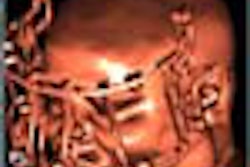Researchers said that using the Harmonic Scalpel, an ultrasonic dissector coagulator, caused less pain than electrocautery among children undergoing tonsillectomy.
"The procedure was particularly helpful in reducing pain during the first few days after surgery," said Dr. Brian Wiatrak in a presentation at the 2001 American Academy of Otolaryngology --Head and Neck Surgery meeting in Denver earlier this month. Wiatrak is the chief of pediatric otolaryngology at the Children's Hospital of Alabama, and associate professor of surgery and pediatrics at the University of Alabama, both in Birmingham.
Wiatrak discussed his results with the Harmonic Scalpel (Ethicon Endo-Surgery, Cincinnati) on 117 children, average age of 6, who underwent tonsillectomies. The study prospectively compared the scalpel, which uses ultrasound technology to cut and coagulate tissue, to conventional electrocautery.
The children were enrolled during a five-month period and were randomized to receive either of the treatments. Although the doctors were aware of which method was being used, the patients were blinded to the instrument choice.
"Use of the Harmonic Scalpel appeared to minimize the degree of thermal injury," Wiatrak said, resulting in less pain. "There were clinical advantages in comfort over the one-to-four-day period after surgery." The Wong-Baker FACES Pain Scale -- a visual analog instrument -- was used to capture postoperative pain.
The ability of the subjects in the Harmonic Scalpel group to sleep soundly was significantly improved on days one to three, Wiatrak said, a result that reached statistical significance.
"Pain following tonsillectomy is a significant cause of postoperative morbidity. Quality of life is reflected by the patient's ability to quickly return to the activities of daily living after surgery," he said.
Wiatrak said that while there appeared to be a significant difference in pain control, both groups of children returned to normal daily activities in the same amount of time.
Doctors spent an average of 8 minutes, 42 seconds to complete the procedure using the ultrasound device; about 4 minutes and 33 seconds were required when using the electrocautery device.
Dr. Richard Rosenfeld, director of the department of otolaryngology at the State University of New York-Downstate Medical Center in New York City, cautioned against accepting the device too readily. He suggested that the study did not include enough patients to make meaningful conclusions about which device was better. He also expressed concern that any problems with the Harmonic Scalpel might not emerge until several hundred patients have undergone treatment.
Wiatrak said one of the advantages of the Harmonic Scalpel was that it allowed both cutting and coagulation at the precise point of impact, resulting in minimal lateral thermal tissue damage. The device offers greater precision in tight spaces near vital structures, he said. Because charring is reduced, use of the device also improves visibility in the surgical field.
By Edward SusmanAuntMinnie.com contributing writer
September 24, 2001
Copyright © 2001 AuntMinnie.com



















